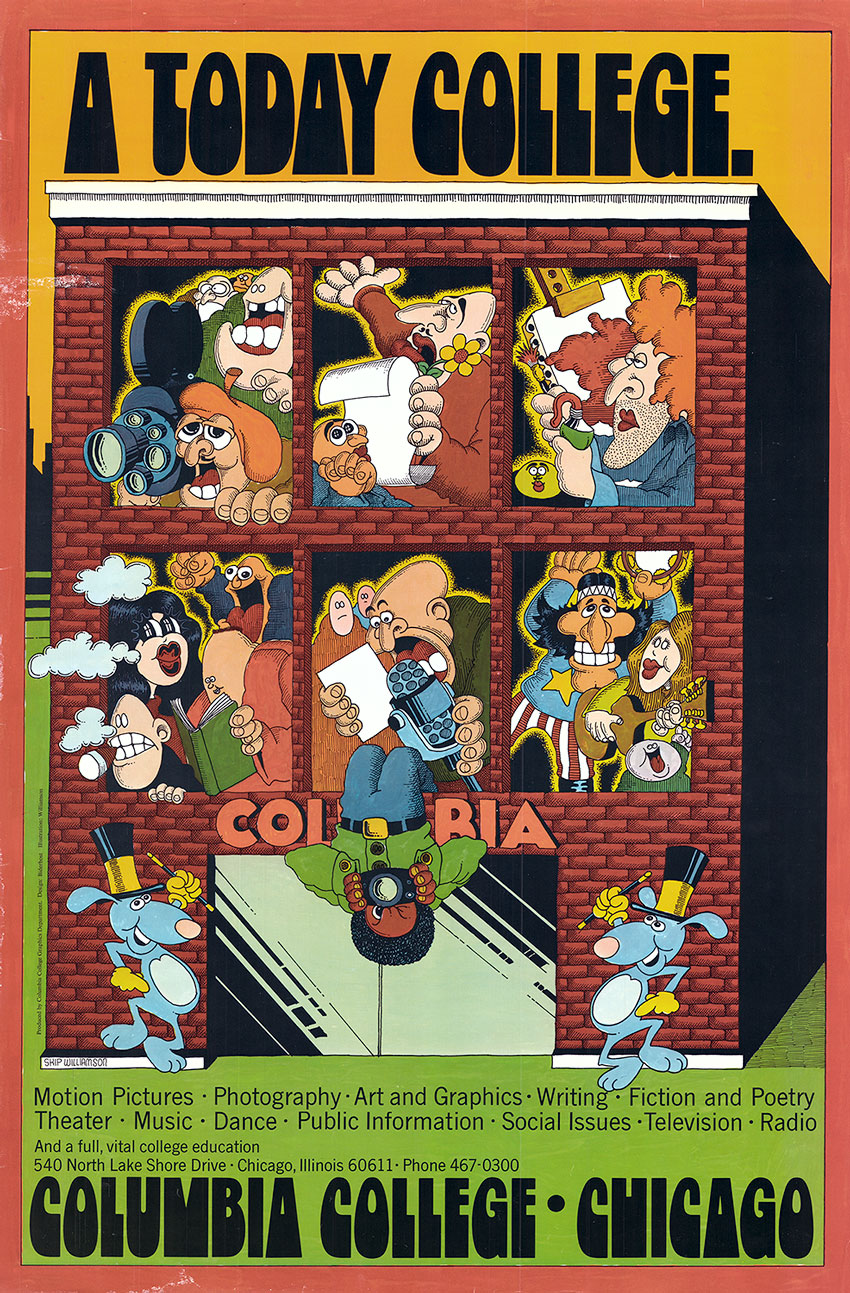
Celebrating 125 Years: An Introduction
This 1972 poster for Columbia depicts 540 N. Lake Shore Drive, the school’s then-headquarters, as a hive of creative energy and self-expression. Lined up like the frames of a comic strip, the windows showcase students and faculty in artistic pursuit: filmmakers, orators, painters, musicians and more.
Above all this action, the headline reads: “A Today College.”
As we put together this very special issue celebrating Columbia’s 125th anniversary, we kept returning to this image. Sure, some parts are a little dated (no more smoking cigars in the classroom), but the same spirit of creativity and collaboration thrives in the South Loop today.
When Mary Blood and Ida Morey Riley opened the Columbia School of Oratory in 1890, they couldn’t have imagined the school’s evolution over the next century and a quarter. Since graduating the first class of nine students, Columbia has reinvented itself again and again.
“In putting together this history, one fact became abundantly clear: Over 125 years, a lot of people have loved this school.”
We organized this issue chronologically; in each of the five sections, you’ll learn about an important period in the college’s evolution. Plus, a timeline runs through the issue, weaving Columbia’s milestones through those of Chicago and the world.
A few examples: In the ’30s, Columbia responded to the need for trained broadcasters by launching a Radio Department—staying on the cutting edge of new media in the process (page 16). In the ’60s, Columbia transformed again under the progressive leadership of President Mirron “Mike” Alexandroff, whose open admissions policy attracted nontraditional students and more than quadrupled the school’s struggling enrollment (page 26). In 2015, Columbia marked its 125th birthday as an institution dedicated to long-term career success for students in more than 100 undergraduate and graduate degree programs (page 37).
In putting together this history, one fact became abundantly clear: Over 125 years, a lot of people have loved this school. The founders might not recognize Columbia’s current incarnation, transformed countless times by new philosophies, programs and technologies, but they would surely recognize the dedication, talent and pure hustle of the Columbia community. Columbia has always remained flexible, changing with the times to provide a wholly vital and relevant education. Through all of its iterations, Columbia has always been—and will always be—a college of today.